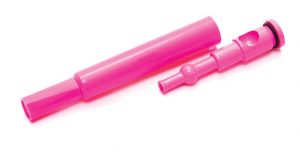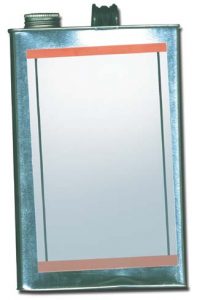3.11 Inhalants
WHAT ARE INHALANTS?
Inhalants are invisible, volatile substances found in common household products that produce chemical vapors that are inhaled to induce psychoactive or mind-altering effects.
WHAT IS THEIR ORIGIN?
There are more than 1,000 products that are very dangerous when inhaled — things like typewriter correction fluid, air conditioning refrigerant, felt tip markers, spray paint, air freshener, butane, and even cooking spray. See products abused as inhalants at National TASC, 10 Most Common Household Products Used as Inhalants (National Inhalant Prevention Coalition).
What are common street names?
Common street names include: Gluey, Huff, Rush, and Whippets.
What do they look like?
Common household products such as glue, lighter fluid, cleaning fluids, and paint all produce chemical vapors that can be inhaled.
How are they abused?
Although other abused substances can be inhaled, the term “inhalants” is used to describe a variety of substances whose main common characteristic is that they are rarely, if ever, taken by any route other than inhalation.
Inhalants are breathed in through the nose or the mouth in a variety of ways, such as:
- “Sniffing” or “snorting”
- “ Bagging” — sniffing or inhaling fumes from substances sprayed or deposited inside a plastic or paper bag
- “ Huffing” from an inhalant-soaked rag stuffed in the mouth or inhaling from balloons filled with nitrous oxide
Inhalants are often among the first drugs that young children use. About 1 in 5 kids report having used inhalants by the eighth grade. Inhalants are also one of the few substances abused more by younger children than by older ones.

What is their effect on the mind?
Inhalant abuse can cause damage to the parts of the brain that control thinking, moving, seeing, and hearing. Cognitive abnormalities can range from mild impairment to severe dementia.
What is their effect on the body?
Inhaled chemicals are rapidly absorbed through the lungs into the bloodstream and quickly distributed to the brain and other organs. Nearly all inhalants produce effects similar to anesthetics, which slow down the body’s function. Depending on the degree of abuse, the user can experience slight stimulation, feeling of less inhibition, or loss of consciousness. Within minutes of inhalation, the user experiences intoxication along with other effects similar to those produced by alcohol.
These effects may include slurred speech, an inability to coordinate movements, euphoria, and dizziness. After heavy use of inhalants, users may feel drowsy for several hours and experience a lingering headache.
Additional symptoms exhibited by long-term inhalant users include:
• Weight loss, muscle weakness, disorientation, inattentiveness, lack of coordination, irritability, depression, and damage to the nervous system and other organs.

Some of the damaging effects on the body may be at least partially reversible when inhalant abuse is stopped; however, many of the effects of prolonged abuse are irreversible.
Prolonged sniffing of the highly concentrated chemicals in solvents or aerosol sprays can induce irregular and rapid heart rhythms and lead to heart failure and death within minutes. There is a common link between inhalant use and problems in school — failing grades, chronic absences, and general apathy.
Other signs include:
- Paint or stains on body or clothing; spots or sores around the mouth; red or runny eyes or nose; chemical breath odor; drunk, dazed, or dizzy appearance; nausea; loss of appetite; anxiety; excitability; and irritability.
What are their overdose effects?
Because intoxication lasts only a few minutes, users try to prolong the high by continuing to inhale repeatedly over the course of several hours, which is a very dangerous practice. With successive inhalations, users may suffer the loss of consciousness and/or death.
“Sudden sniffing death” can result from a single session of inhalant use by an otherwise healthy young person. Sudden sniffing death is particularly associated with the abuse of butane, propane, and chemicals in aerosols.
Inhalant abuse can also cause death by asphyxiation from repeated inhalations, which lead to high concentrations of inhaled fumes displacing the available oxygen in the lungs, suffocation by blocking air from entering the lungs when inhaling fumes from a plastic bag placed over the head, and choking from swallowing vomit after inhaling substances.
Which drugs cause similar effects?
Most inhalants produce a rapid high that is similar to the effects of alcohol intoxication.
What is their legal status in the United States?
The common household products that are misused as inhalants are legally available for their intended and legitimate uses. Many state legislatures have attempted to deter youth who buy legal products to get high by placing a restriction on the sale of these products to minors. Even though some substances are not currently controlled by the Controlled Substances Act, they pose risks to individuals who abuse them. Source: Drugs of abuse: A DEA resource guide (DEA, 2017)
Additional information National Institute on Drug Abuse (NIDA), Inhalants.

